There's power in place—and when it comes to space flight, Kennedy Space Center Visitor Complex℠ in Florida is truly the center of the universe. Since 1962, the site has been host to some of NASA's most important launches, including all human missions to space, the Hubble Space Telescope, Mars rovers and New Horizons probe, which entered the Pluto system in January 2015. The Space Launch System, which will bring astronauts to Mars, is set to launch from launch pad 39-B in the coming years.
And trips to space are just the beginning: In addition to its space flight programs, Kennedy Space Center Visitor Complex welcomes 1.5 million visitors a year. From meeting astronauts to seeing historic spacecraft up close, here are 11 heart-pounding moments from the epicenter of American space travel:
1) Watch a Live Rocket Launch

The fact that a rocket weighing thousands of tons can travel from the Earth's surface into orbit is staggering in and of itself—but witnessing takeoff is unforgettable. As engines ignite in a burst of flame and sound waves rip through the air, your heart skips a beat.
Four locations at the visitor complex offer launch viewings accompanied by live commentary. From the viewing room of the four-story LC-39 Observation Gantry, watch rockets take off from the same launch pad that launched the Apollo and space shuttle missions while sizing up the Vehicle Assembly Building, where the center assembles its largest rockets. From the lawn of the NASA Causeway, enjoy an up-close view of the launch pads across Indian River, or watch from the comfort of the Apollo/Saturn V Center and main complex. Whatever the location, the anticipation is palpable as the countdown reaches 3…2…1.
2) Launch Into Orbit
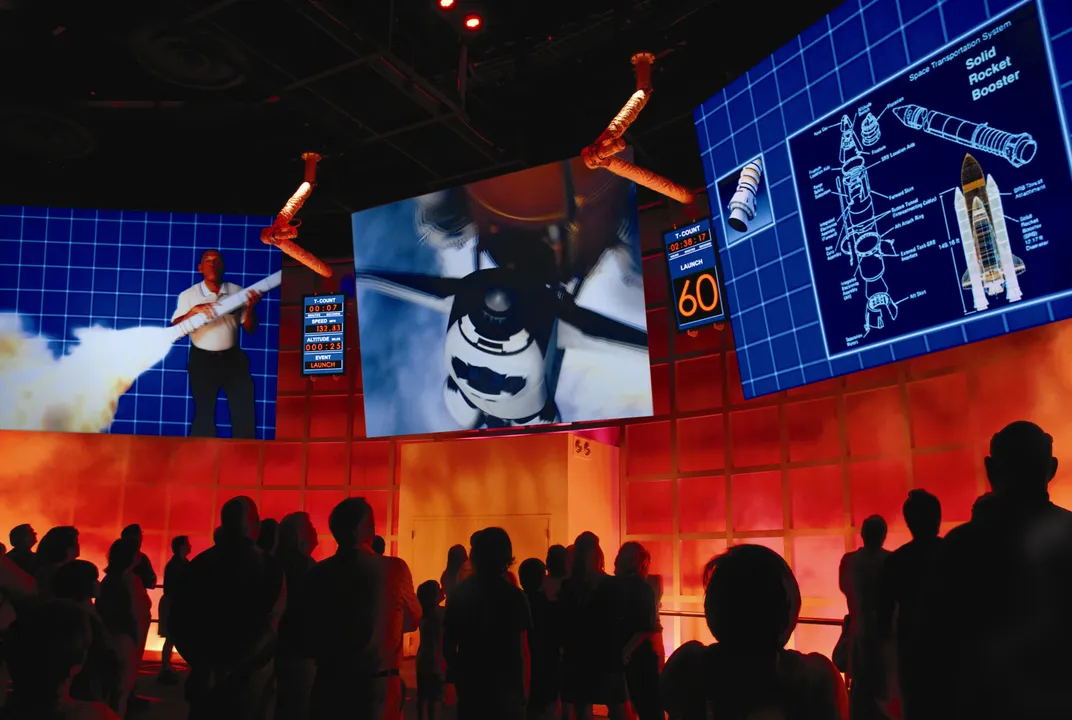
While very few people have experienced the thrill of space travel, veteran astronauts say the Shuttle Launch Experience® is the next best thing. In this simulation, travel from four hours before launch to the final seconds in a matter of minutes. Following a prelaunch briefing by veteran Space Shuttle Commander and NASA Administrator Charlie Bolden, your seat shifts back into a vertical position to prepare for takeoff. The final countdown commences, engines rev up and suddenly you’re flying at simulated speeds of 17,500 miles per hour. Eight-and-a-half minutes later, a feeling of weightlessness settles over you. The payload bay doors open to reveal Earth—a shifting mass of vivid greens and blues, set against a starry sky only astronauts can recount.
3) Walk the Apollo 11 Gantry
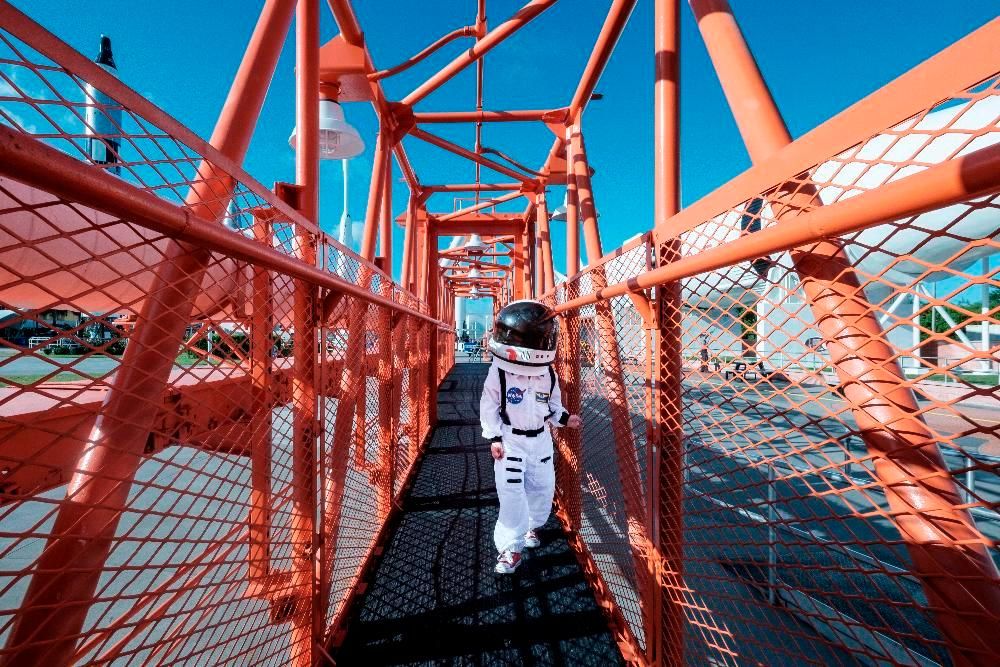
On July 16, 1969, the crew of Apollo 11 left Earth to complete the first crewed mission to the moon. Four days later, Neil Armstrong took the first step on the moon, proclaiming: “That’s one small step for man, one giant leap for mankind.” In the Rocket Garden, relive the historic mission by walking on the very same gantry that Neil Armstrong, Buzz Aldrin and Michael Collins used to board the Saturn V rocket. Outside of the gantry, walk among rockets that span the history of space flight. Or climb inside replicas of capsules from the Mercury, Gemini and Apollo eras to understand the conditions experienced by America’s first astronauts.
4) Touch the Moon in the Apollo Treasures Gallery
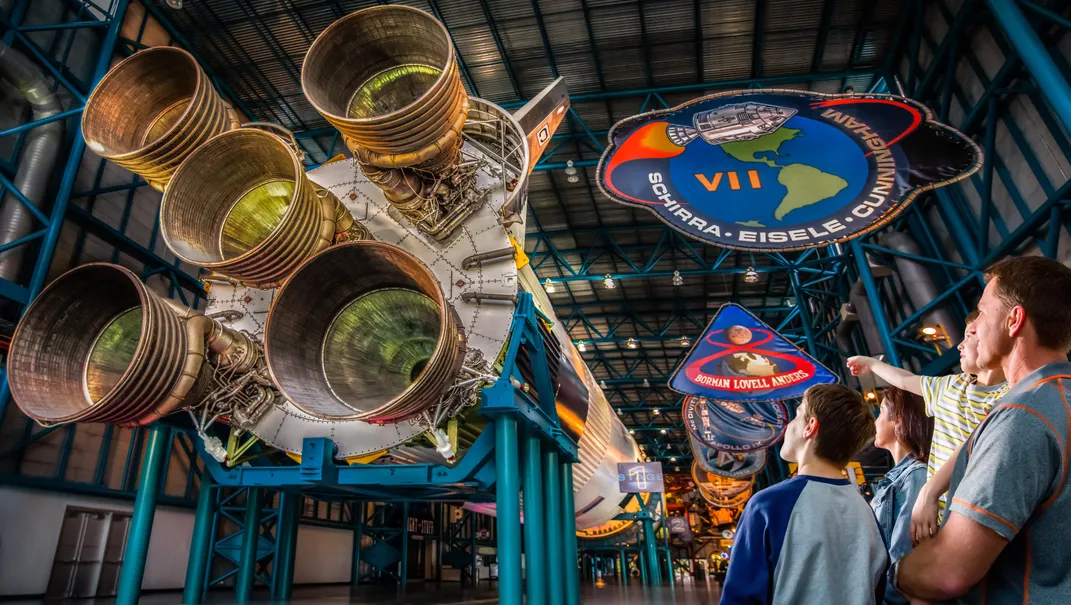
The Apollo/Saturn V Center is a trove of items commemorating the Apollo missions. Held up by support beams and spanning a football field in length is the sister rocket to the one that transported the crew of Apollo 11 to the moon. After walking its length, stop by a replica moon buggy used to train astronauts on Earth, or peer inside a full-size model of Skylab, the precursor to the International Space Station. The Apollo/Saturn V Center is also one of the only places on Earth where you can touch a piece of the moon. As you glide your fingers over a sample of moon rock, the fact that man traveled 238,000 miles to the moon and back—a round trip almost 20 times the circumference of the Earth—sinks in.
5) Meet an Astronaut

No one tells the story of space travel quite like the people who have been there themselves. Each day in the Astronaut Encounter Theater, a featured astronaut shares his or her experiences training for and living in space, followed by a tell-all Q&A session. “If you’re bold enough to ask, I’m bold enough to answer,” says astronaut Bob Springer, who served as a mission specialist on the STS-29 Discovery and STS-38 Atlantis shuttle flights. He enjoys the Q&A sessions for the chance to inspire a new generation and share what NASA releases leave out – “the emotional part” and “stories behind stories." After the Q&A, visitors can meet and take photos with featured astronauts, who range from commanders to pilots, mission specialists and payload specialists.
6) See the Space Shuttle Atlantis® Up Close
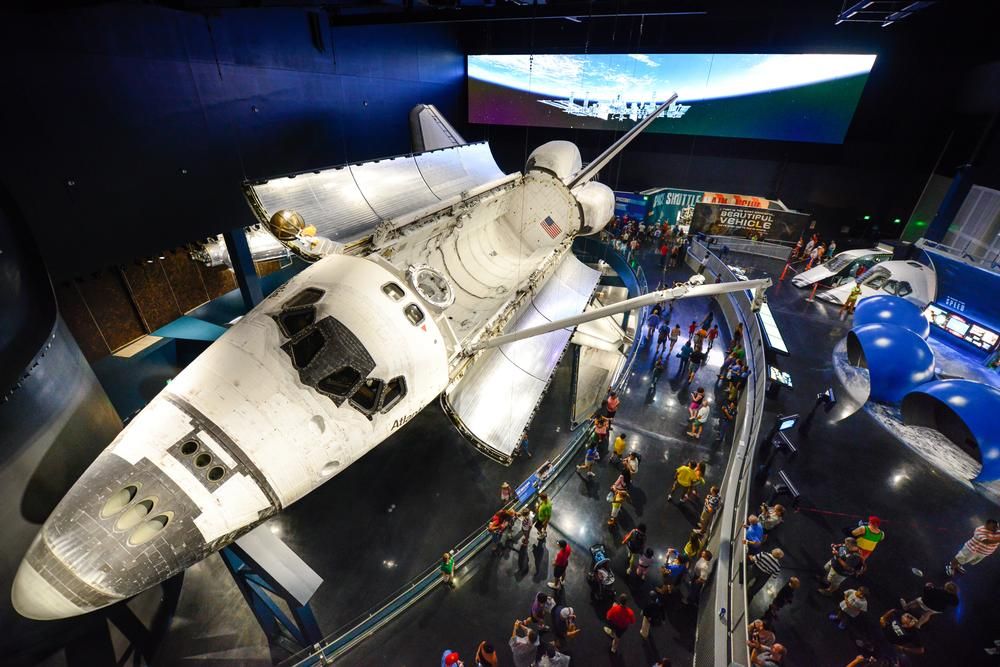
In 2011, the space shuttle Atlantis completed its 33rd and final mission since 1985, the last of space shuttle era. The legendary orbiter, whose missions include the final servicing of the Hubble Space Telescope in 2009, traveled a total of 126 million miles and transported 146 astronauts. It is now on display at Kennedy Space Center Visitor Complex with payload bay doors open and robotic arm extended, the way it would have appeared after undocking from the International Space Station. Sixty state-of-the-art multimedia presentations surround the orbiter, bringing to life its systems and components. Adding to the effect are the building’s orange and gold hues, which emulate the colors of re-entry, and gray floor tiling, mimicking the tiles used to protect the orbiter from heat.
7) Relive the Daring Feats of Early Space Pioneers
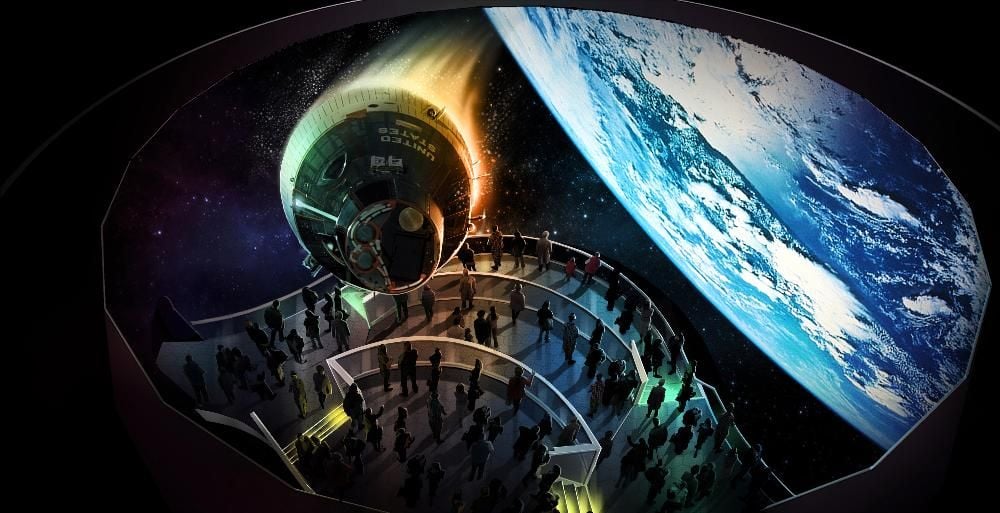
High-tech special effects will bring the adventure and danger of America’s earliest space missions to life in the Heroes & Legends exhibit, opening November 11. Featuring 360-degree visual presentations, a 4D multisensory theater experience and interactive exhibits, Heroes & Legends will present the stories of pioneering astronauts while exploring how Americans define heroism. Interact with the nearly 100 astronaut heroes inducted to date in the new U.S. Astronaut Hall of Fame® and watch a hologram reenact Gene Cernan’s hair-raising “spacewalk from hell," during which his goggles fogged up and he struggled to reenter the Gemini 9 capsule.
8) See Footage Shot by Astronauts in 3D IMAX®
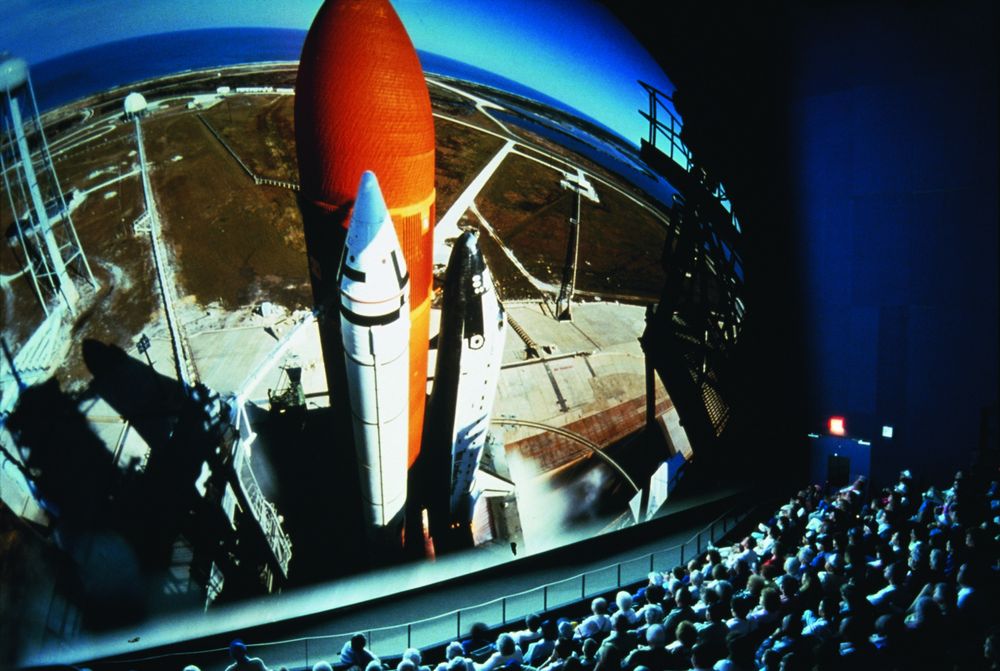
The world’s only twin IMAX® screens, each a jaw-dropping five stories tall, bring footage shot by astronauts to life in two motion pictures. Journey to Space, narrated by Sir Patrick Stewart, explores groundbreaking plans to land astronauts on Mars and introduces the team selected for the task. Interviews with commander of the final shuttle mission Chris Ferguson and Serena Aunon, an astronaut selected for future flight, emphasize how these future plans would not be possible without the contributions made by the Space Shuttle program. A Beautiful Planet, narrated by Jennifer Lawrence, casts Earth in a new light from the perspective of the International Space Station. Using Canon 4K cameras, International Space Station astronauts captured all manner of breathtaking natural phenomena, from lightning storms to volcanoes, coral reefs and even the Northern Lights. At night, they documented city lights, a gripping visualization of how humans have shaped the planet.
9) Remember Fallen Heroes of Space
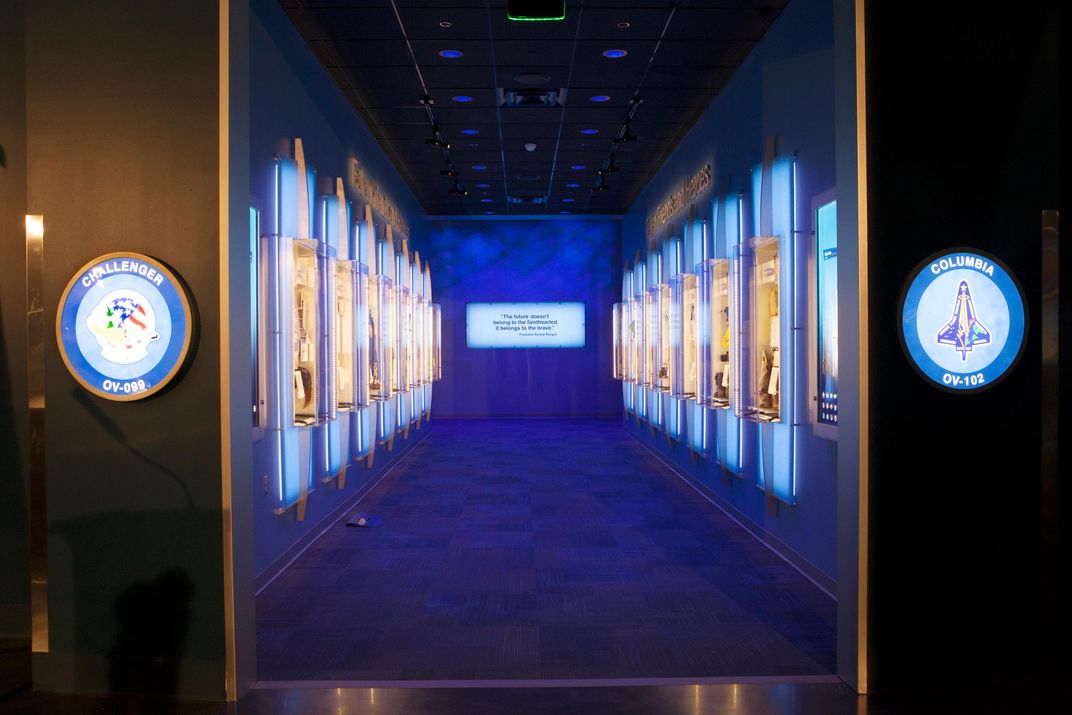
Forever Remembered is a powerful tribute to the 14 astronauts who lost their lives in the STS-51L/Challenger and STS-107/Columbia space shuttle missions. As you enter the memorial, mission patches and personal items, such as Michael Anderson’s Star Trek lunch box and Rick Husband’s cowboy boots and Bible, highlight the astronauts’ passions and achievements. An adjacent gallery displays recovered sections of both orbiters: a large section of the Challenger’s left side body with the American flag intact and the framework of Columbia’s cockpit windows. Other galleries emphasize the importance of learning from the past. “The crews of Challenger and Columbia are forever a part of a story that is ongoing,” says NASA administrator Charles Bolden of the exhibit. “It is the story of humankind’s evolving journey into space, the unknown, and the outer-reaches of knowledge, discovery and possibility. It is a story of hope.”
10) Train Like an Astronaut
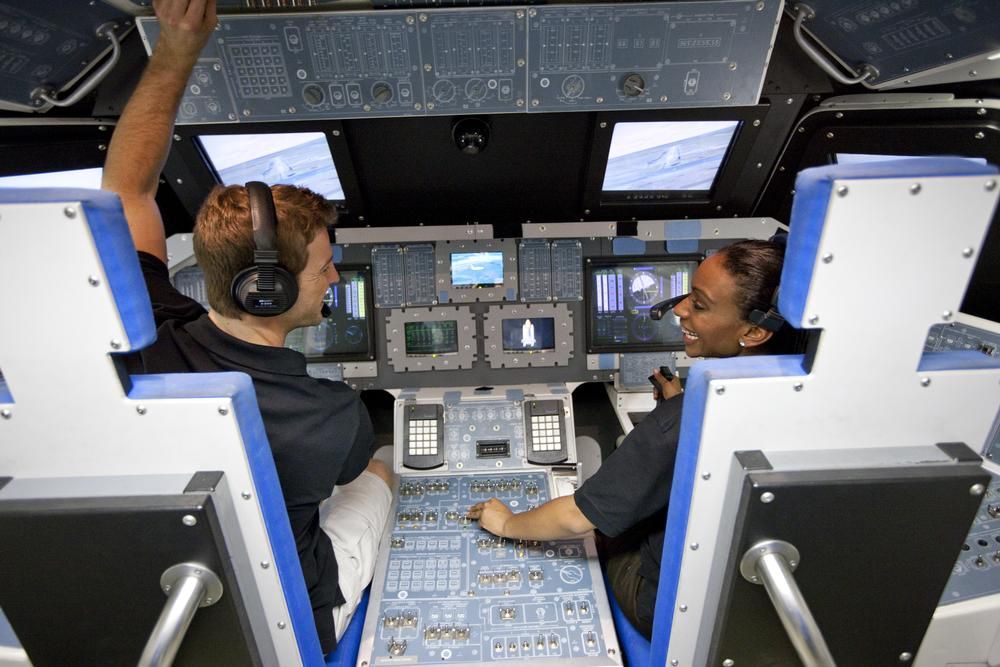
Astronauts spend years preparing for missions to space. The Astronaut Training Experience® is an exhilarating, hands-on, half-day program designed by veteran astronauts that walks you through how they prepare for the rigors of space flight in the months before launch. Following a mission briefing, space flight experts instruct you on how to execute a high-Earth orbit, dock and perform crucial repairs. Next, test your strength and stamina on the Micro-Gravity Wall and 1/6th Gravity Chair, or dare to enter the Multi-Axis Trainer, which rotates in multiple directions up to 360º. After receiving your mission role, enter a full-scale mock-up of a space shuttle orbiter or mission control room to conduct a mission simulation. A final graduation ceremony includes an inspiring debriefing on the future of the U.S. space program.
11) See the Farthest Reaches of the Universe in 4K Resolution
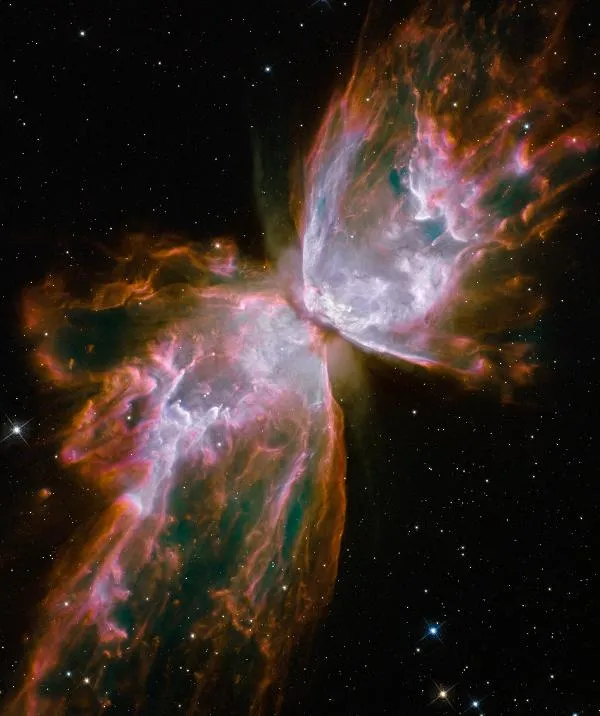
For over 25 years, the Hubble Space Telescope has orbited the Earth, affording us invaluable views of deep space, including stars, nebulas and black holes. Five grueling repair missions and dozens of hours of spacewalks have kept the telescope in service, allowing scientists to continue to answer fundamental questions of our existence: How do stars form? What are galaxies made of? What does our cosmic neighborhood look like? Now you can traverse 13.4 billion years through the eyes of the telescope in stunning 3D, 4K resolution during the “Eyes on the Universe: NASA’s Space Telescope 3D” live presentation at Kennedy Space Center Visitor Complex. The presentation also discusses what may be the next great observatory: NASA's James Webb Telescope, set to orbit the sun in 2018.
.jpg)
/https://tf-cmsv2-smithsonianmag-media.s3.amazonaws.com/filer/8d/a1/8da15350-fa71-4e04-8bf3-c0a831b16f5e/rocketgardenatsunset1.jpg)